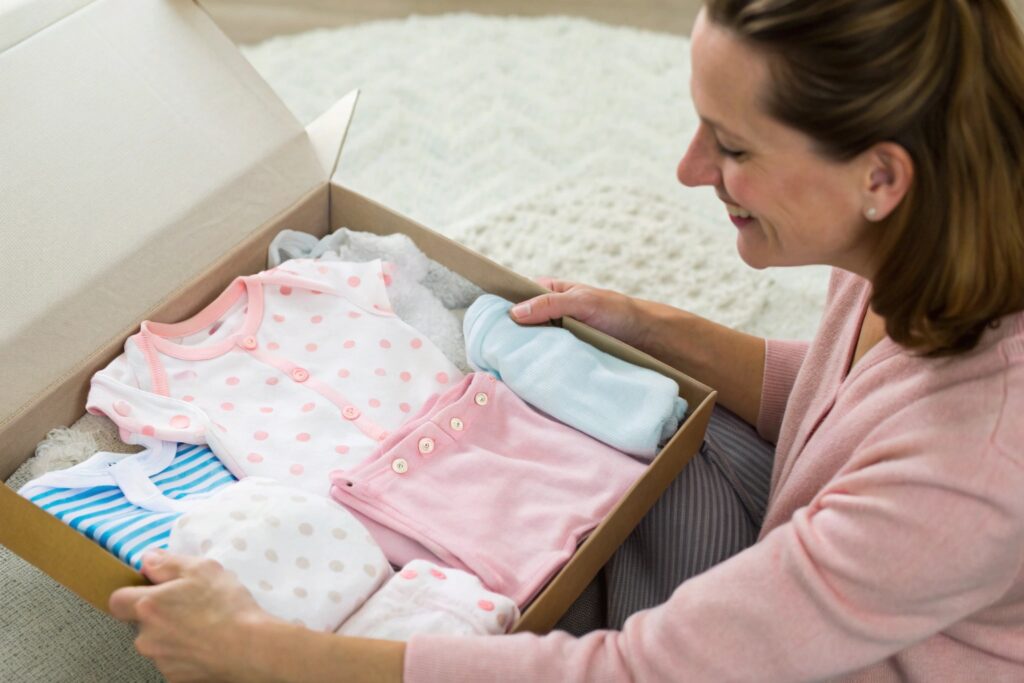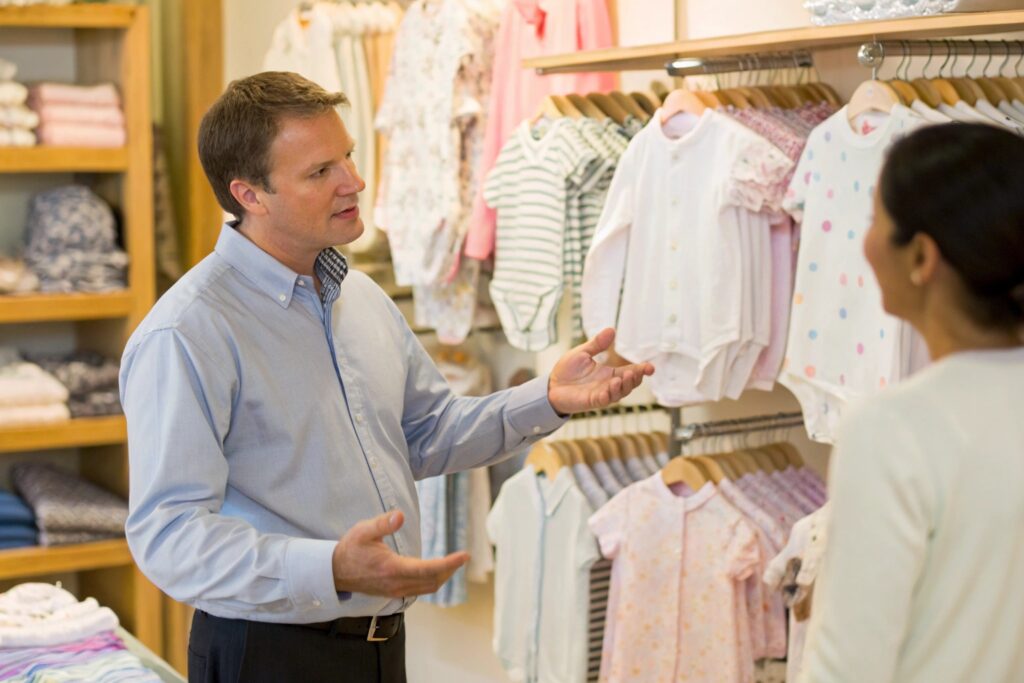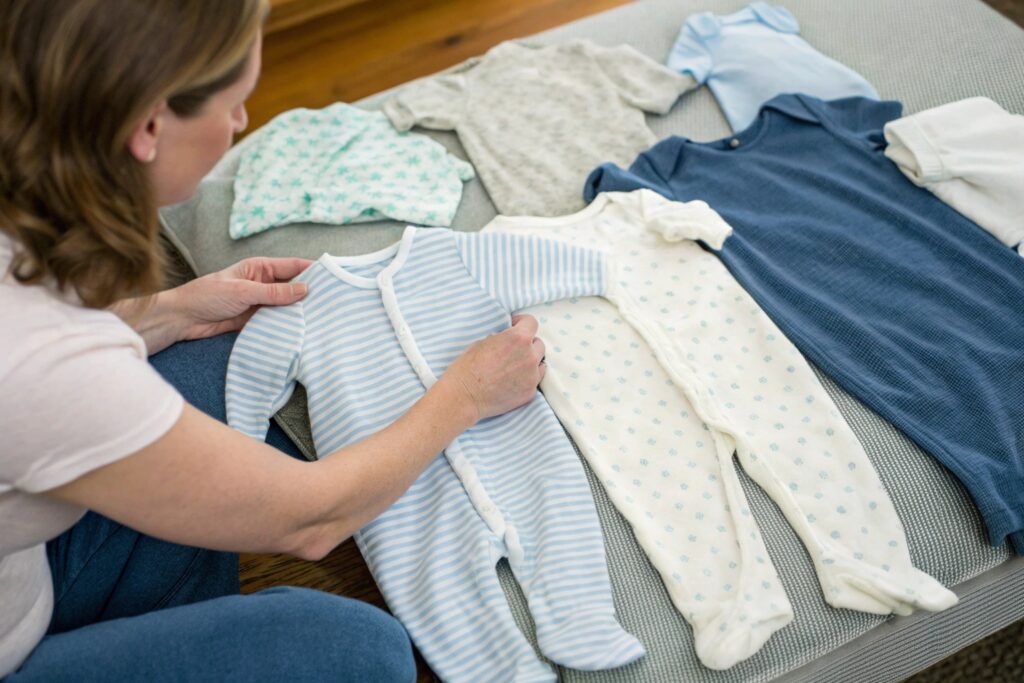Shopping for a newborn can feel magical—but sizing baby clothes is often more confusing than expected. Too small, and the outfit gets skipped. Too big, and it might not be worn for months.
The best size to gift a newborn is typically 0–3 months or even 3–6 months, depending on the baby’s birth weight, expected growth, and season. It’s better to size up slightly than to gift clothing they’ll outgrow in a week.
Here’s how to choose baby clothing that’s cute, practical, and perfectly timed.
What Clothing Size Fits Most Newborns Comfortably?
Babies don’t come in one size—and neither does newborn clothing.
Most “newborn” size clothes fit babies from 5 to 8 pounds (2.3 to 3.6 kg), which means many full-term babies grow out of them quickly—sometimes in just a few days.

Typical newborn size guidelines:
| Clothing Label | Baby Weight Range | Baby Length (avg.) |
|---|---|---|
| Newborn (NB) | 5–8 lbs (2.3–3.6 kg) | 18–21 inches (46–53 cm) |
| 0–3 Months | 8–12 lbs (3.6–5.4 kg) | 21–24 inches (53–61 cm) |
| 3–6 Months | 12–16 lbs (5.4–7.3 kg) | 24–26.5 inches (61–67 cm) |
Since many babies are born over 8 lbs, 0–3M is often a safer default, especially if you’re unsure of the baby’s size or due date.
Why Sizing Up Can Be a Smart Gift Strategy?
Gifting clothing the baby can grow into ensures your present will actually get used.
Choosing 0–3M or even 3–6M clothes gives parents more flexibility, prevents waste, and often fits better once newborn laundry and recovery chaos settle down.

Benefits of sizing up:
- Longer wear time – the baby gets more use out of your gift
- Parents already stocked on newborn – most baby showers focus on NB
- Helps bridge the clothing gap between newborn and 6M
- Seasonal planning – gift outfits they’ll wear when weather aligns
| Baby’s Age | Ideal Gift Size |
|---|---|
| 0–2 weeks | 0–3M or 3M sizing |
| 1 month+ | 3–6M for future use |
| Gifting for future events | Think ahead 2–3 months (e.g. summer romper for June baby) |
Parents love gifts that are useful now and later.
How to Choose Between Newborn, 0–3M, and 3–6M Sizes?
Your choice depends on the baby’s birthweight, time of year, and whether the clothing is for daily wear or a keepsake occasion.
In most cases, skip “newborn” unless you know the baby is premature or very small. 0–3M fits better for most new babies, and 3–6M is great for growth.

When to choose each size:
| Size | When It’s Best |
|---|---|
| Newborn | For preemies or babies born under 7 lbs |
| 0–3M | Safe for most babies at birth, fits until ~12 lbs |
| 3–6M | Ideal for gifting ahead (especially if baby is already 1 month+) |
Also consider what type of clothing you’re gifting:
- Newborn sleepers – okay in NB or 0–3M
- Rompers or outfits – better in 3–6M to leave room
- Occasionwear (e.g., photo onesies) – choose based on expected event date
Tips for Picking Practical and Long-Lasting Baby Outfits?
When gifting baby clothes, think beyond the outfit. Look for comfort, easy changes, and long wearability.
Practical babywear features—like stretchy fabric, footed bottoms, or zip closures—make parents’ lives easier and increase how often your gift is worn.

What makes a great baby clothing gift?
- Two-way zippers – quick diaper changes
- Foldover mittens – built-in hand protection
- Stretchy materials – grow with the baby
- Neutral colors – match multiple outfits
- Layering options – like bodysuits or cardigans
- No tags or itchy seams – for better comfort
| Feature | Why Parents Love It |
|---|---|
| Machine washable | Less stress for daily use |
| Snaps at crotch | Easy dressing and changing |
| Unisex colors | Great for hand-me-downs or future use |
| Minimal branding | Focus stays on baby, not logos |
Consider pairing your gift with a soft blanket, bib set, or pacifier clip to make it a full starter kit.
Conclusion
The best baby clothing gift size? One that fits soon—but not too soon. While newborn clothes may be adorable, most gift-givers are better off choosing 0–3M or 3–6M to ensure their outfit gets plenty of wear. Choose soft fabrics, smart features, and timeless colors—and your gift will be appreciated by both baby and parents.










